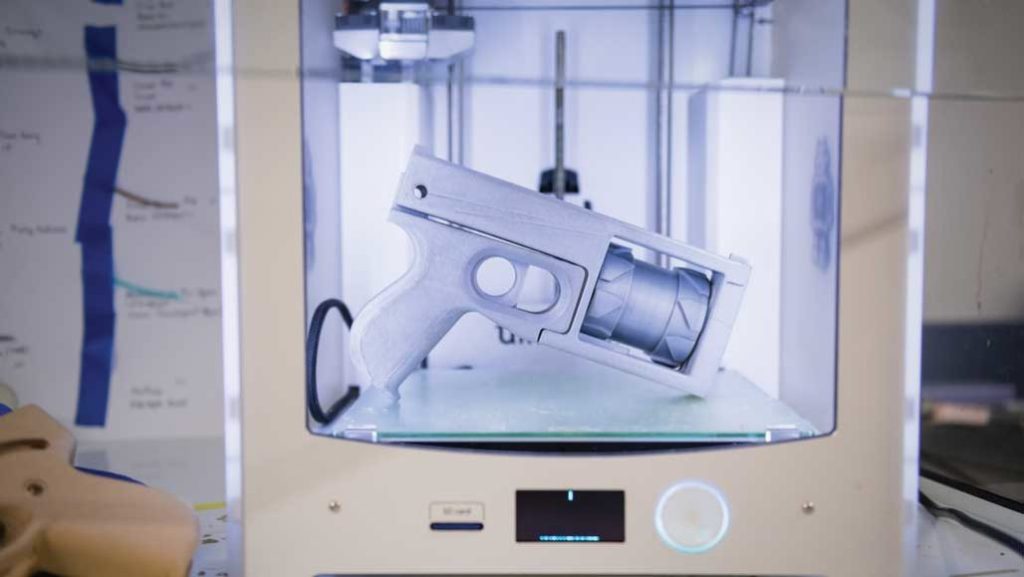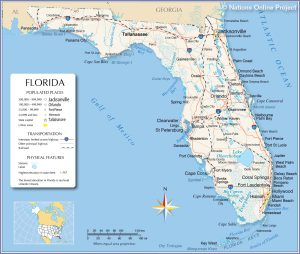3D Printed Guns Pose Challenge to Law Enforcement
According to a recent article by Science News, forensic scientists at the University of Lausanne in Switzerland are currently studying 3D printed guns like Defense Distributed’s famous “Liberator”, which made waves when its blueprints first hit the Internet in 2013. The research involved printing and assembling six Liberators and firing them in a test chamber. The speed of the bullets was clocked as high as 172 meters per second, about half as fast as bullets fired from a similar, more conventional firearm. However, the bullets can cause nearly as much damage as a standard handgun with the same caliber.
Most of the 3D-printed guns broke after being fired only once. Sometimes the nail came flying out of the gun along with the bullet. The bullets can also deviate from their intended path. The risk, along with the expense of printing a gun that would actually work, might make models like the Liberator unattractive to people who actually intend to use them. As forensic scientist Olivier Delémont put it, “It would be more dangerous to be the shooter than to be the target.”

Image credit: MEGAN WOLFE/UNIV. OF MISSISSIPPI
However, this does not mean that people won’t want to own a 3D printed gun if it can be made less risky to the owner. Some 3D printed models like those printed by researchers at the University of Mississippi can hold up better than the Liberator if printed with the right materials. These researchers tested models like the Washbear revolver and the Songbird pistol which they found online, though the Washbear blueprints appear to have been taken down. They found that the bullets often had bits of plastic on them after being fired, but the guns printed with the most durable types of plastic tended to hold up better.
Technology Likely to Improve, Become Cheaper
At this point, 3D printers capable of creating a Liberator that will actually work, even if just once, tend to run in the thousands of dollars. This may be out of the price range of individuals who want a cheap gun that can fly under the radar of law enforcement until it is actually used.
It’s easy to get complacent if one hasn’t studied the history of technological innovations. If 3D printing follows the same curve as computing power, inexpensive 3D printers that are at least as capable as the one currently being used by the forensics researchers are likely to sit in the apartments of hobbyists everywhere within the next few decades. The owner of one of these future 3D printers will have the capacity to create Liberators for all his friends in between prints of high-quality figurines for his gaming hobby.
The materials used by 3D printers are also likely to improve to the point where the Liberator won’t break with every shot. Some of the higher-end 3D printers can already use metals as a material. 3D printers can be used by organizations like the French Army in the field to produce spare parts in a pinch. It may not be too much of a stretch of the imagination to picture 3D printed guns that are practically indistinguishable from those produced in the “traditional” way showing up in the near future.
Retired police chief Frank Fernanduz summed it up: “With technology today, it’s just a matter of time before [people] figure out how to make a functioning multishot handgun work consistently.”
What Should Governments and Law Enforcement Do?
Is this cause for alarm? It’s easy to become concerned about a Liberator behind every blade of grass. Now that Defense Distributed’s gun blueprints — including the Liberator — have been embedded in LBRY‘s blockchain and app, they will be notoriously difficult to get rid of in any way short of destroying all computers and 3D printers.
This doesn’t mean that there won’t be shenanigans. 3D printed guns have been confiscated at airport security gunpoints. Individuals who have been legally barred from owning firearms have been caught with them. Because 3D printed guns have no serial numbers, usually aren’t registered, and could conceivably be dumped while on the run, they could be hard to trace in the event that a crime is committed using one. A criminal could simply shoot someone and then ditch the now-useless gun in a random dumpster.
A good first step involves understanding how 3D printed guns work, as the Swiss forensics research team is doing. The research revealed that the use of guns printed using plastics is likely to leave telltale traces like bits of plastic or a small chunk of the gun. If 3D printed guns are ever sold at retail locations, it may be possible to use these traces to track a gun used in a crime back to a handful of stores that stock that particular model.
Law enforcement personnel and regulators will also have to learn how to talk to 3D printing enthusiasts, investors, and innovators. Individual owners of 3D printers who won’t want to lose their expensive machines over one ill-placed Liberator are likely to be in the best position to limit the output of these guns. Businesses that own 3D printers are likewise unlikely to jeopardize their ability to stay in business by ignoring the law. However, this doesn’t mean that they can’t be alienated by cops who treat them like the enemy or regulators who want to complicate their lives with bureaucratic red tape simply because of a small minority that would misuse the technology.
Perhaps the best way to avoid such alienation would be to treat law-abiding citizens with the respect they deserve. Most people who own guns usually only use them at the shooting range, for self-defense, or for hunting and may resent the implication that they will inevitably become unhinged and commit a mass shooting at any moment. Likewise, owners of 3D printers are likely to resent an unwarranted implication that they’re mass producing Liberators for sale to criminals. They will be more likely to answer questions and less likely to side with techno-libertarians like the publishers of gun blueprints out of pure self-interest if law enforcement focuses on solving actual crimes rather than harassing innocent 3D printing enthusiasts on the assumption that they are automatically guilty.
This does not mean that the problem should be ignored. 3D printed guns are here, they will be created, and they will be used. Forensics experts are already on the job of researching them and have already found some ways to recognize the telltale signs of their use. The challenge to law enforcement will be finding and using effective ways to deal with the use of unregistered 3D printed guns with no serial numbers in ways that do not violate the constitutional rights of people who might — maybe — have the ability and incentive to create and own them.






